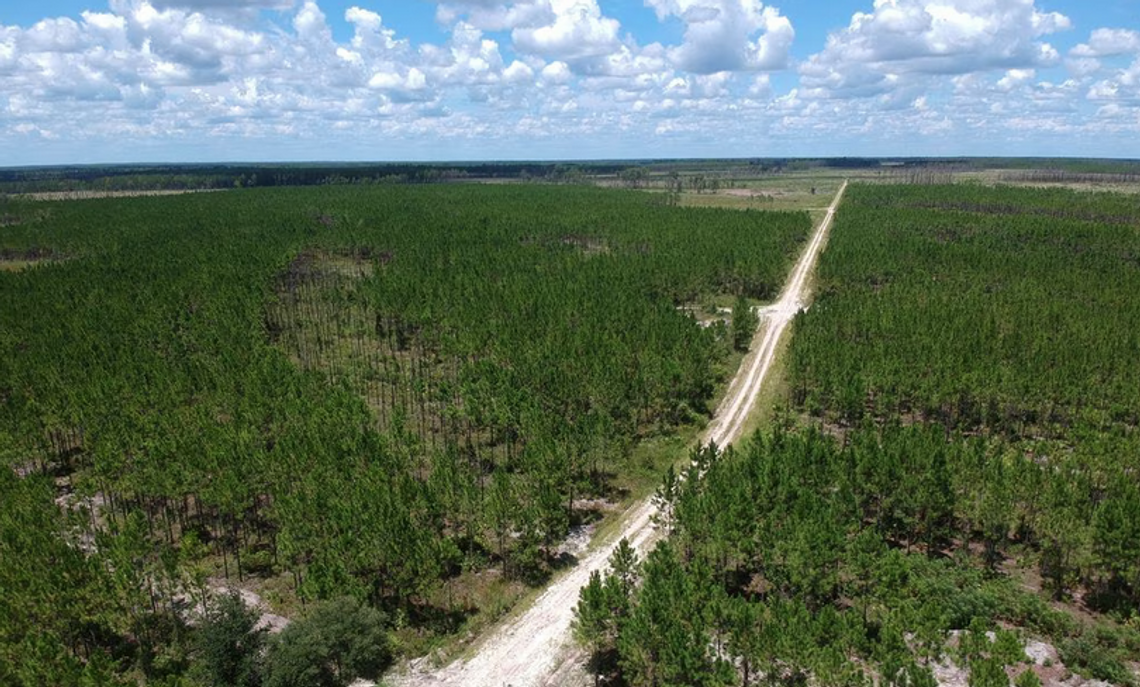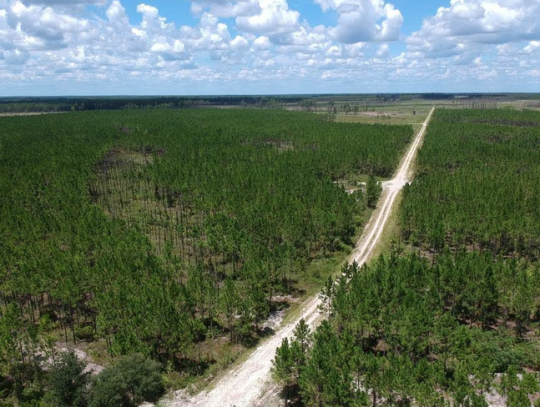Draft mining plans for a controversial titanium mine that would operate on the doorstep of the Okefenokee National Wildlife Refuge were released Thursday by state environmental regulators — a major development in a years-long fight over the project.
The plans were released by Georgia’s Environmental Protection Division (EPD), which currently has sole permitting jurisdiction over the mine, after a dizzying saga that has seen oversight of the project juggled back and forth between state regulators and the U.S. Army Corps of Engineers.
The mine would extract titanium and zirconium less than three miles from the edge of the refuge on an ancient sand dune complex known as Trail Ridge, which forms the Okefenokee Swamp’s eastern boundary. The proposed mining site is off Route 94 near St. George, just minutes from the Georgia-Florida border.
Conservationists opposed to the project say mining on Trail Ridge could lower water levels in the swamp, disrupting critical habitat for hundreds of species and imperiling an attraction visited by more than 700,000 tourists a year.
Titanium alloys are used in aircraft and weapons systems, but the element’s most common use is in titanium dioxide, a whitening compound used in toothpaste, sunscreen, paint and other household products.
The company behind the mine — Alabama-based Twin Pines Minerals LLC — is seeking to establish a 773-acre “demonstration mining area,” but the actual footprint of the mine will be roughly 580 acres.
The plans say “mineral-bearing sands” will be extracted from a pit 500-feet long, 100-feet wide and a maximum of 50-feet deep. The company says the pit will move at a rate of roughly 100 to 200 feet per day.
In the draft, the company estimates it could start mining as soon as April.
Twin Pines’ plans call for drilling two wells in the Floridan Aquifer — the same aquifer that underlies the Okefenokee — capable of pumping a maximum of 1,000 gallons of groundwater per minute. That water, the company says, will be used primarily at the start of the mining process to fill four “process water” ponds with a maximum capacity of 3.9 million gallons.
Once mining begins, Twin Pines says the mine will withdraw little water from the aquifer and will not harm the swamp. Instead, the operation will use water stored in a set of massive “Water Management Ponds” with a capacity of almost 150 million gallons. Those ponds will be filled with precipitation runoff, recycled water and groundwater “seepage” produced by the mine pit itself as it moves across the site.
The company says no water will be discharged from the site and that it plans to use massive evaporating machines to get rid of excess water.
Twin Pines says the mine will bring good-paying jobs to nearby communities. In a statement, Twin Pines president Steve Ingle called the release of the plans an important milestone that validates the “thorough and rigorous” science the company and EPD used to evaluate the mine.
“This is a great opportunity for people to learn the truth about what our operations will and will not do, and the absurdity of allegations that our shallow mining-to-land-reclamation process will “drain the swamp” or harm it in any way,” Ingle said.
But federal officials and University of Georgia scientists (UGA) disagree, warning that mining on Trail Ridge could permanently damage the fragile ecosystem.
The Okefenokee is the largest federal wildlife refuge east of the Mississippi River and is home to thousands of species, including 40 species of mammals, more than 200 species of birds, 50 species of reptiles, and more than 600 plant species. The refuge also holds millions of tons of peat deposits, keeping huge amounts of heat-trapping carbon dioxide from escaping into the atmosphere.
Rhett Jackson, a hydrologist at UGA, questioned whether Twin Pines will be able to operate the mine as a no-discharge system. He said the company also included no plans for dealing with the salt deposits its evaporating machines are expected to leave behind.
“The MLUP (mining land use plan) completely fails to address the issue of massive salt deposition downwind of the wastewater evaporation system, which could have devastating impacts to the swamp’s freshwater ecosystem and the surrounding forests,” Jackson said.
Jackson also questioned state environmental regulators’ analysis of the mine’s hydrologic impacts.
A summary of the company’s mining plans published by EPD says the mine will have minimal impact on water levels in the swamp. Jackson says their analysis is flawed because it relied on a water gauge far downstream on the St. Mary’s River, not one just south of the swamp.
Asked about Jackson’s critique, EPD spokeswoman Sara Lips shared an agency memo from December reiterating the agency’s conclusion that the mine will have little impact on the swamp’s water levels.
The mining plans have also grabbed the attention of at least one member of President Joe Biden’s cabinet. In November, U.S. Interior Secretary Deb Haaland wrote a letter to Gov. Brian Kemp saying the mine poses an “unacceptable risk” to the swamp and calling on the state to stop the project.
Last year, the U.S. Army Corps of Engineers — the agency that typically reviews projects that impact federal wetlands — settled a lawsuit filed by Twin Pines and abdicated permitting responsibilities to Georgia environmental regulators.
The plans released Thursday are not final, but their public release triggers the start of a 60-day public comment period.
At the end of the public comment window, EPD says it will review all feedback, recommend any necessary changes and potentially issue a draft surface mining permit to the company. If a draft permit is issued, another public comment period would begin, with the length still to be determined.
Twin Pines also needs to obtain other permits from state regulators, including a groundwater withdrawal permit and an air permit. The company has submitted applications for those, but the status of those permits was not immediately known.
Environmental advocates urged the public to take advantage of the public comment period.
“It is a critical time for the public to weigh in by sending comments opposing the Twin Pines mine that will destroy hundreds of acres of wetlands on the doorstep of the Okefenokee,” said Megan Huynh, a senior attorney at the Southern Environmental Law Center.
Information on how to submit comments, plus links to register for the two virtual public meetings on the plan scheduled for Feb. 21 and 23 are available here.
The Division will make recordings of the meetings available on our website at https://epd.georgia.gov/twin-pines.
• Zoom Meeting Registration February 21 or 23, 2023
A copy of the response to comments and the approved MLUP will be added to the Twin Pines Minerals, LLC webpage at https://epd.georgia.gov/twin-pines.
For additional information, contact the manager of the Surface Mining Unit by phone at 404-362-2537 or at the Tradeport address.










